Cavalier King Charles Spaniel: Is Yours A Cavalier, King Charles, Or English Toy Spaniel?
As a breed with a royal background like the Cavalier King Charles Spaniel, there are bound to be confusing terms and origins that complicates our understanding of these amazing Dogs. The Cavaliers have long been a favourite among the homes of Royalty in France, Spain, England and Scotland— often seen by their master's side in famous portraits.
The Cavalier King Charles Spaniel
Toy Spaniels were a huge hit between the 16th to 18th century, as ancestors to the Cavalier King Charles Spaniels we see today. A Red and White toy spaniel type was owned by the 1st Duke of Marlborough for hunting purposes— in which he stated how his Dog is actually capable of keeping up with a Horse's trot. Toy Spaniels were also a personal favourite of Mary, Queen of Scots and her grandson Charles, and great grandson Charles II (King Charles II). Both of whom were said to travel everywhere with their Toy Spaniels, eventually bestowing upon the breed with their names.
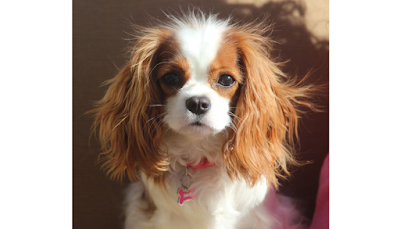 |
| Cavalier King Charles Spaniel |
After the death of King Charles II, the popular breed amongst Royals shifted from Toy Spaniels to Pugs, and people began cross-breeding them to achieve flatter, shorter noses and domed heads we see in King Charles Spaniels today. Attempts were made to sustain the original looks with Toy Trawler Spaniel (extinct), and in 1926, American man Roswell Eldridge opened a showcase for Dogs. Making his offer of 25 pounds each for the best looking male and female— closest resemblance to the old types as seen in paintings.
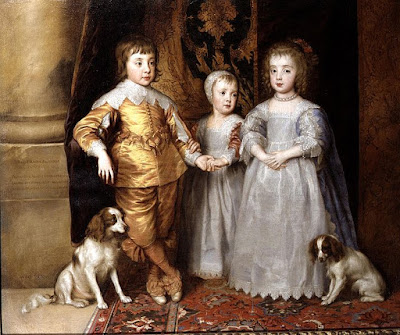 |
| Source |
Alas, Roswell Eldridge passed away before seeing through on his plans, but his words left an impact on some breeders, leading to the formation of the 1st Cavalier club in 1928. Thereafter breed standards were written, gaining recognition by The Kennel Club (UK) as "King Charles Spaniels, Cavalier Type". Hardship and famine during WWII brought about much damage to the new breed, leaving only 6 surviving Cavaliers— founding ancestors to the breed!
Appearance: How To Tell Them Apart?
The Toy Spaniels are a small sized breed as compared to other Spaniel breeds, with a silky coat of medium to long hair. This coat is sometimes wavy, but should never be curly for show purposes. Feathering around their ears , legs, feet and tail is highly regarded as a breed standard. Why the Cavalier and King Charles Spaniel are often confused with one another is due to the different terms being used in different countries.
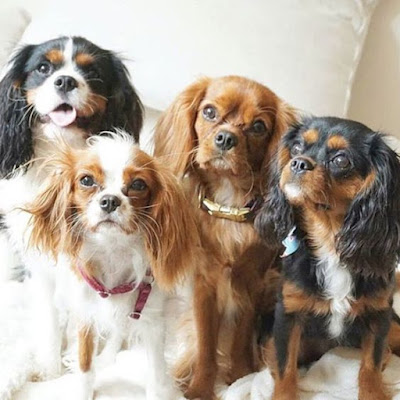 |
| Source |
Cavalier King Charles Spaniel — Higher Ears, Flat Skull and longer Muzzle.
King Charles Spaniel / English Toy Spaniel — Domed Skull, Short Muzzle and smaller in size.
In the United States however, the term King Charles is used as reference to a colouration. Red and White or Chestnut and White colouration is referred to as Blenheim in the United Kingdom, as tribute to the victory over Blenheim by John Churchill,1st Duke of Marlborough— if you recall, his Cavalier companion was a Red and White.
Solid Chestnut or Red were termed Ruby Cavaliers. Black and Tan colouration is known as King Charles (amongst King Charles Spaniels). Last but not least, the Tri-colour is also known as Prince Charles (amongst King Charles Spaniels).
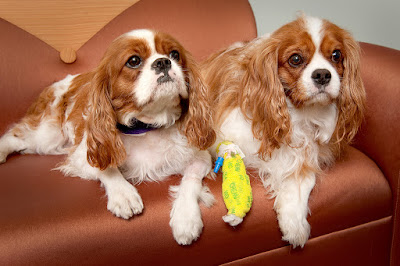 |
| Left: King Charles Spaniel. Right: Cavalier King Charles Spaniel |
Grooming Requirements
The silky smooth hair of Cavalier King Charles Spaniels and King Charles Spaniels require a weekly grooming to remove dead or loose hair, just to prevent tangles and matting. While long feathering is preferred in show rings, owners may opt to keep them short for non-show Dogs— long hair might get dirty while outdoors at a faster rate.
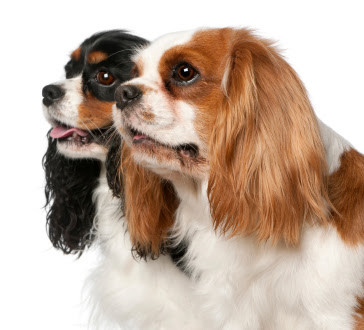 |
| Back: Cavalier King Charles Spaniel. Front: King Charles Spaniel / English Toy Spaniel |
Trim their nails and clean their eyes and ears with a Vet-approved cleanser and cotton ball, brush their teeth to maintain good dental health. If you are unsure how to perform these tasks, approach a trusted Groomer or Veterinarian for professional help.
Personality Of Cavaliers And King Charles Spaniels
These breeds are friendly, sociable and affectionate Doggos that are adaptive to various living environments. Being eager to please by nature, they are also intelligent enough to pick up on training, in terms of obedience and agility. Whether you're bring them out for a run, having a game of fetch, a long walk or even enjoying a calm restful day at home, these furry pals will have no qualms about these activities, as long as you're by their sides. With proper care and love, the average lifespan of these fellas is 9 to 14 years.
You might also be interested in these:
*UPDATED* Dog Hotels: The Available Boarding Services In Singapore And How To Pick One!
Your Stories Can Be Heard Too
Do YOU have a story to share? Your voices are important to us and the Pets community! Our readers are encouraged to share their Pet-related reviews of a place and its services, experiences, even lifestyle tips and tricks to better our Pets lives, on our platform, one paw at a time. Be a part of an educational and informative Pets community because at ThePetsDialogue, your voices could make a huge difference on a global scale.
Write to us at [email protected] today!
Our website is a work in progress, however, if you did find our articles interesting please do feel free to share! For more Pet care tips and other Pet-related articles, head to www.thepetsdialogue.com ☺
Disclaimer
This article was written with informational purposes, as you know, we’d love to share our collective research and experiences as fellow Pet owners and lovers. It is not meant to alternate in any way as advice or diagnosis of Professionals.
ThePetsDialogue claims no credit for images posted on this article unless otherwise stated. All rights go to respective owners as stated. If you do not wish for your image(s) to appear here do drop us an e-mail and it will be removed promptly. If you do wish to use any of our original published information, you are welcome to contact us!




No comments:
Post a Comment